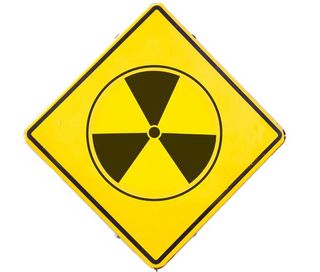How Do Radiation Treatments for Cancer Work?

"The Healthy Geezer" answers questions about health and aging in his weekly column.
Question: I have a friend who is undergoing radiation treatments for cancer. I was wondering how this works. Doesn't the radiation burn everything it touches?
Answer: Radiation therapy kills cancer cells by damaging their genetic material. This process prevents the cells from growing. Radiation attacks all cells in a targeted area, but most healthy cells recover when treatment ends.
When you are given radiation therapy—also called irradiation, radiotherapy or x-ray therapy—physicians attempt to protect the good cells by shielding them. They also limit dosage and spread out the treatments.
About half of all cancer patients receive some type of radiation therapy, which uses ionizing radiation to kill cancer cells and shrink tumors. This therapy can be delivered from machines outside your body or from radioactive material inserted into your body.
External radiation is the most common type used in this therapy. Internal radiation uses sealed implants in or near the tumor. Systemic radiation therapy employs unsealed radioactive materials that circulate throughout the body. In some cases more than one type of radiation is prescribed.
External radiation uses a machine that directs high-energy rays into the tumor. Most external radiation is given over many weeks during outpatient visits.
Sign up for the Live Science daily newsletter now
Get the world’s most fascinating discoveries delivered straight to your inbox.
Internal radiation (also called brachytherapy) uses radioactive metal pellets, seeds, ribbons, wires, needles, capsules or tubes that are implanted. In some cases, patients may have to be admitted to a hospital for this procedure. Implants may be left in the patient temporarily or permanently.
Radioactive drugs are used in systemic radiation. These drugs can be given by mouth or injection. Systemic radiation often requires a brief hospital stay.
Radiation therapy may be used to treat almost every type of solid tumor and cancers of the blood (leukemia) and lymphatic system (lymphoma). The type of radiation used depends upon many circumstances, such as the type of cancer and its location.
Radiation therapy also can be used to reduce pain from cancer. This is called palliative radiation therapy.
Will radiation therapy make you radioactive?
External radiation therapy will not make you radioactive. If you undergo internal radiation therapy, your body may give off a small amount of radiation briefly.
If the radiation is in a temporary implant, you will be asked to stay in the hospital and may have to limit visitors during treatment. Permanent implants give off small doses of radiation over weeks. The radiation usually is confined to the treatment area; the risk of exposure to others is small.
Sometimes doctors recommend that you protect the people around you if you have systemic radiation. With this type of therapy, radioactive materials can get into your body fluids. In most cases, safety precautions must be followed only the first few days after treatment. Over time the radiation becomes weaker and your body gets rid of it.
If you would like to read more columns, you can order a copy of "How to be a Healthy Geezer" at www.healthygeezer.com.
All rights reserved © 2012 by Fred Cicetti
